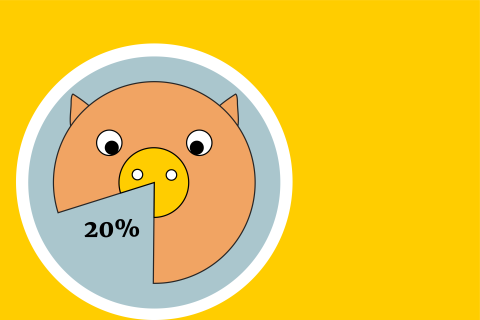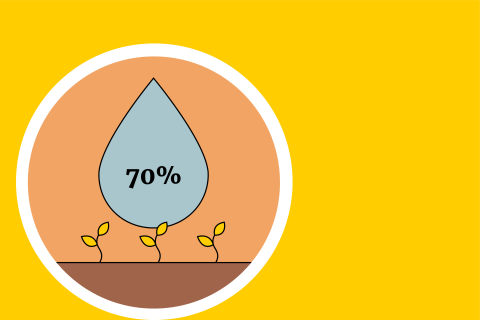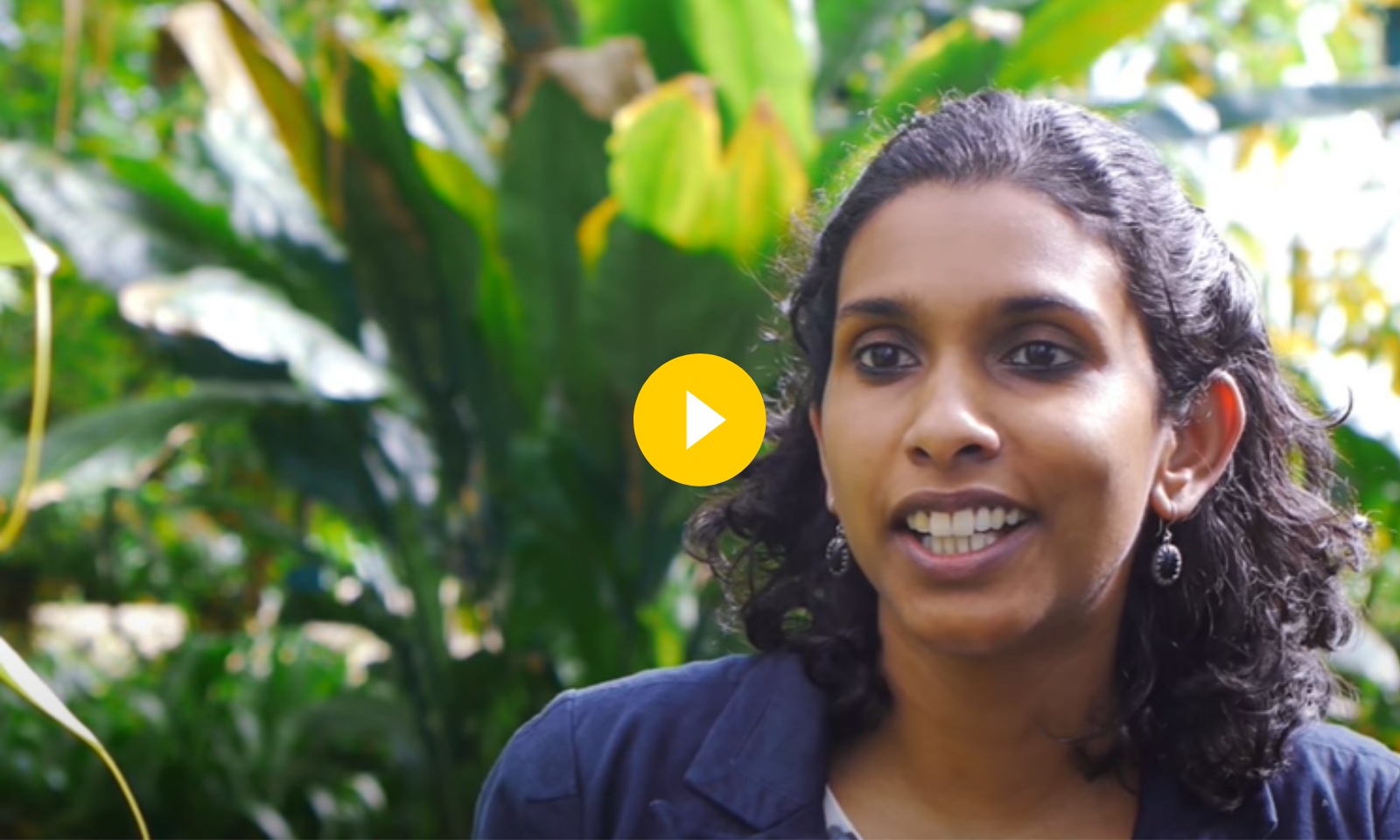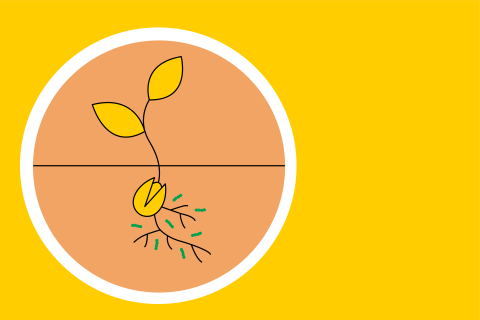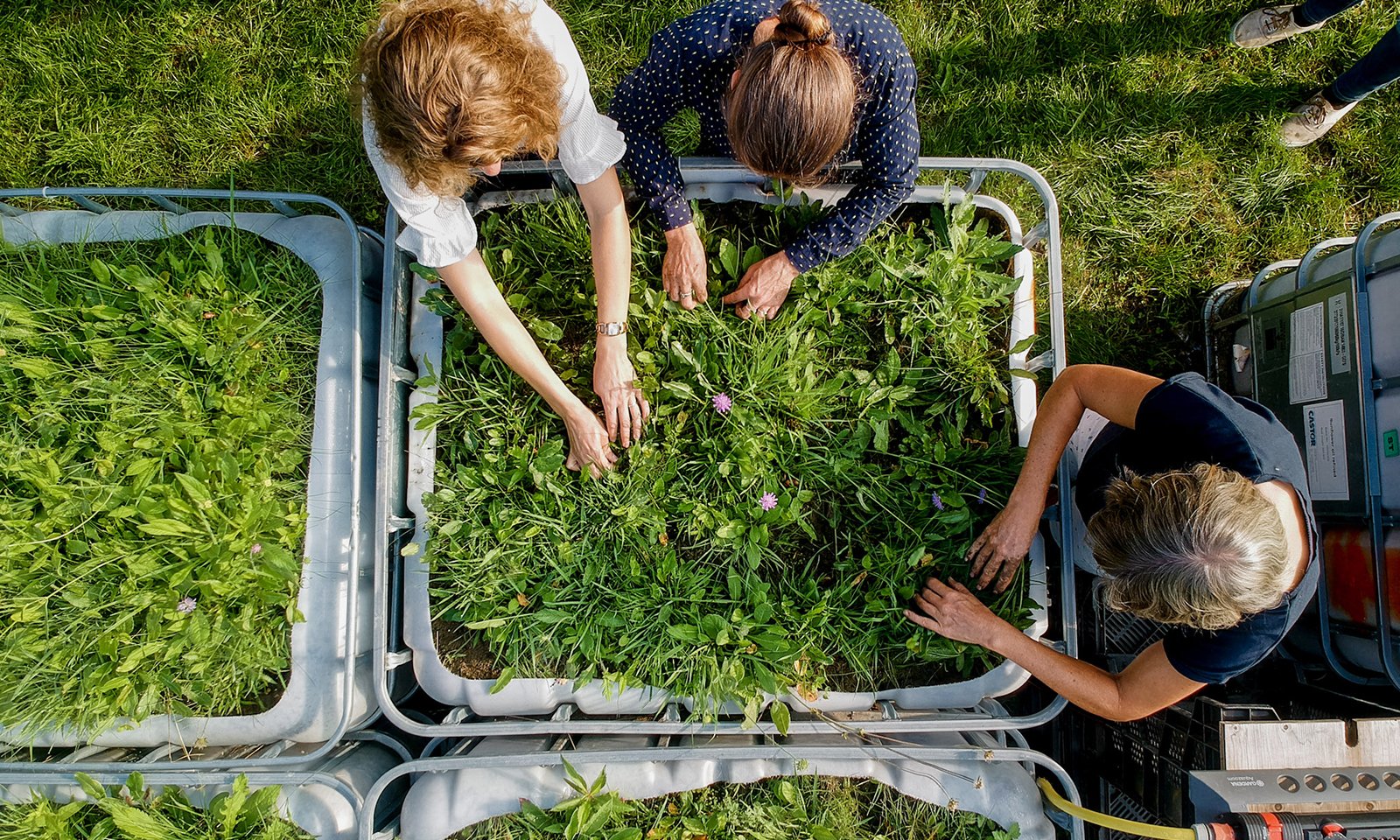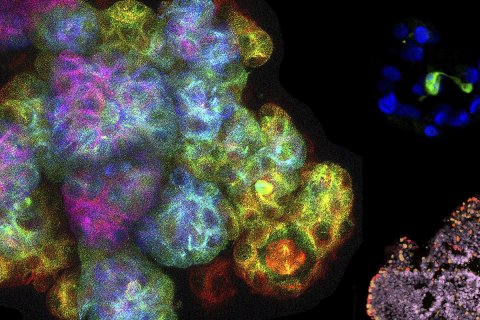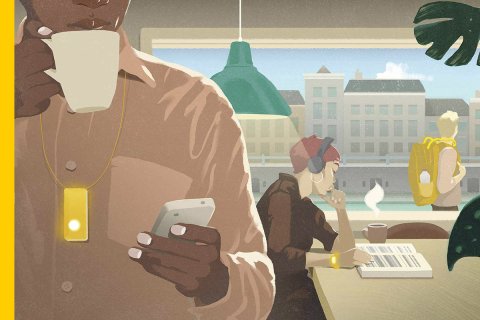The global food system is not future-proof. The mantra of maximising yield per acre at the expense of everything else has exhausted our soils and decimated the biodiversity of the ecosystems we depend on for our food. We are literally eating away the health of our planet. This is how a team of food scientists in Utrecht want to turn homogenized landscapes into mosaics that breath and bustle with life, making our food chain resilient, one seed at a time.
Planetary health: a recipe for resilience
Estimated reading time: 23 minutes

The illusion of food diversity
Corridors of abundance. Stroll across the aisles: potatoes, eggplants and tomatoes, here; oranges and strawberries, even exotic mangoes and papayas, there. Keep trotting through piles of packaged meat and fish, canned seafood, flashing piles of noodles and towered chocolate bars. If supermarkets – the ultimate link of our human food chain - are to faithfully reflect the fruits of our Earth, one may be tempted to believe that nature is bountiful to satisfy our appetites; and its rows of diversity, the rear view mirror to rich agricultural landscapes. But what do we really find if we are to trace the items in our shopping cart all the way back to the soil they came from?
Most trips into the industrial food chains that currently feed most of our world lead to the very few same places – be it the maize and soy belts of America, the palm-oil plantations of South-East Asia or the extraordinary greenhouse complexes of the Netherlands. Wherever you are, the great illusion of the varied choice and biodiversity of a supermarket turns out to rest solely on a handful of crops. Two-thirds of global crop production comes from just 9 plant species out of the 6,000 cultivated for food. Chief among these is maize – an essential ingredient in over a quarter of the 45,000 items in the average American supermarket, which now makes for the standard livestock’s diet too.
Food chains, especially for processed foods, have become so distant and opaque that it’s hard to see how, in the end, "eating is an agricultural act", as Wendell Berry famously said. An act that is turning more and more homogeneous. The small diversity of crops in farmers’ lands is as much an imminent threat to their livelihoods, growing ever more dependent on a few corporations’ seeds; as it is a direct menace to the soil that grows the food on our plates.
The warning bells keep on ringing...
Inhospitable agricultural landscapes
“The way that humans produce food today is the most dominant cause of biodiversity loss,” says Merel Soons, Professor of Plant Dispersal Ecology & Nature Conservation at Utrecht University. The warning bells have been ringing for decades. In the past 30 years, an area larger than South Africa has been cleared in forests to make way for growing our food. And the loss of habitats for millions of organisms is so severe that now more than 32,000 species are threatened with extinction. This has enormous consequences for human welfare as well: due to the dramatic decline of pollinating insects, millions of domesticated bees are loaded in trucks every year to pollinate almonds in mega-farms in California, off to New York to pollinate apple trees, to Maine for blueberries and to Massachusetts for cranberries. And fewer and fewer of these seasonal hard-workers return home. Merel notices the ongoing decline of species in the agricultural landscapes where she studies plant populations: “Our agricultural system is built to prioritize just about one thing - achieving the lowest possible costs and the highest possible output,” she says, “but that has huge environmental and societal costs. We urgently need to change our agricultural system to make it nature-inclusive, a trend that is only just beginning.”
The rise of monocultures, growing just a single crop on large areas, quickly depletes the soil of its nutrients. Farmers are then forced to use chemical fertilisers to encourage plant growth. These fertilisers, in turn, disrupt the natural makeup of the soil and displace millions of organisms from their natural habitats. Monocrops are highly susceptible to plant diseases and pests. A fungus or an insect invasion can devastate the entire crop. Deprived of the protective mechanisms of the natural cycle, monocropping agriculture is at the mercy of yet more chemicals to fight off pests. When pesticides and fertilisers seep into the groundwater, they pollute freshwater resources all the way up to the oceans and their marine ecosystems. A vicious cycle…
Biodiversity is key to increasing the resilience of food production to external changes.
“There is an urgent need to change the way in which we produce and consume food, ensuring that biodiversity is not ‘stripped off’ of food-production systems, but rather harnessed as a key component to secure the production of food and its resilience to climate change and other environmental changes”, says Merel Soons. She is vice-chair of the Future Food Hub in Utrecht. Some 150 researchers at Utrecht University coalesce around the hub to find solutions to a monumental challenge: how to feed a world that may have to accommodate 10 billion people in the next few decades, up from today’s 7.8 billion?
For most of our history, feeding more people could be done by farming more land. That option no longer exists; nearly three quarters of today’s arable ground has been cultivated, and irrigation for agriculture already consumes 70% of the Earth’s dwindling water resources. Feeding the world within planetary boundaries requires a complete overhaul of our food system.
Researchers in Utrecht University are rethinking agriculture to create a food system that is more resilient to global changes, from developing strains of potatoes that are more tolerant to flooding, to cut the use of chemicals, water or energy through precision farming, all the way to nudging consumers’ dietary choices in order to accelerate a ‘protein transition’ to plant-based diets. Some wish to engineer a way out of this challenge, others focus on restoring the ecological balance of natural cycles and some others work at the base of governance. Combined, theirs is a recipe for planetary health – a concept based on the premise that the well-being of humans, other living organisms and the ecosystems in which they live are interdependent.
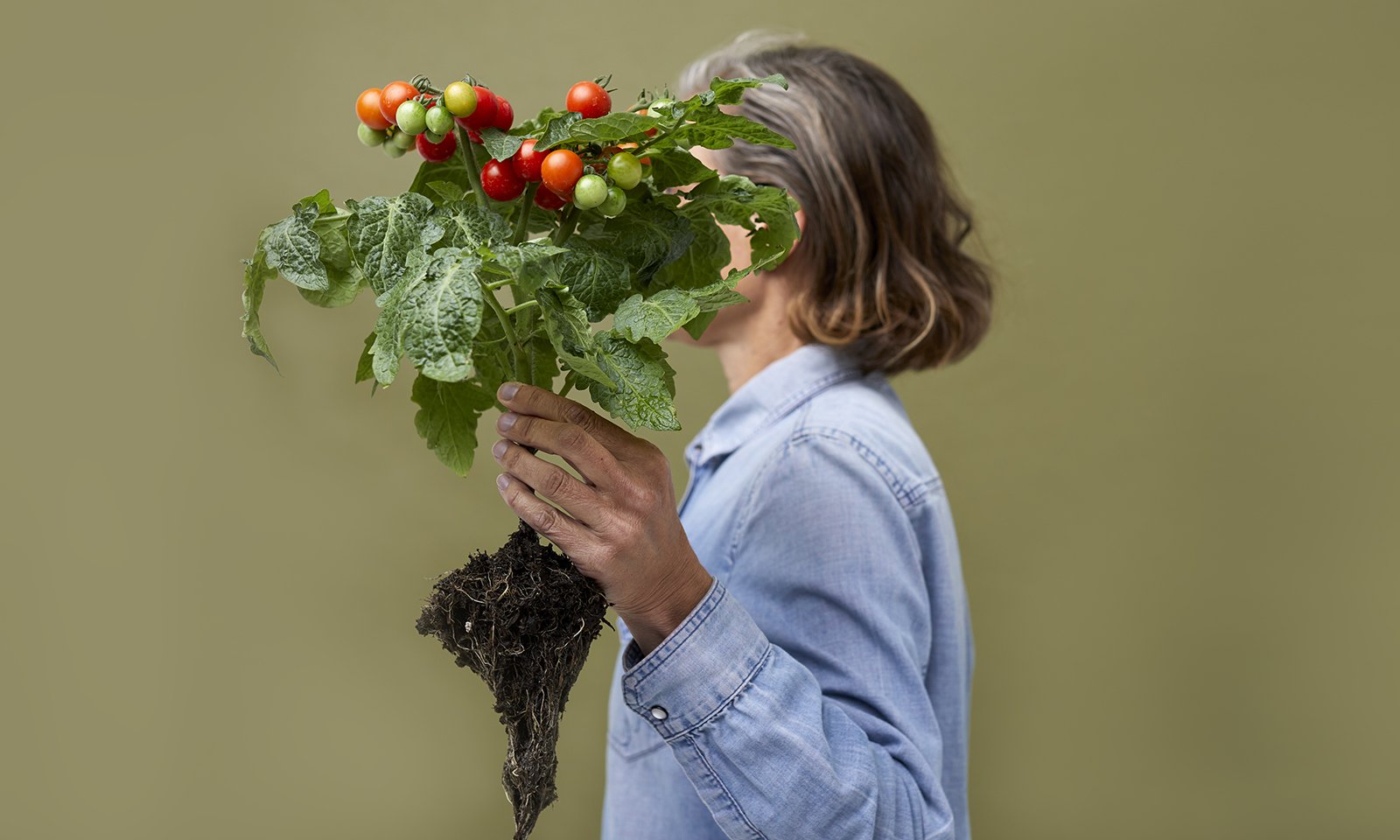
Harvesting the wisdom of plants
Most of us are used to full supermarket shelves all year round. But recent years have made people aware that events like extreme heat, droughts, floods or even a worldwide pandemic like COVID-19 can disrupt increasingly centralised food supplies and the livelihoods of those who work the land. A connoisseur of stress tolerance in plants, Rashmi Sasidharan is on the other side of the screen. She has just finished homeschooling her daughter, weathering the storm in quarantine. The new coronavirus is not just an ice-breaker for our conversation – for her and other plant scientists in Utrecht, their ongoing field experiments at the International Rice Research Institute (IRRI) in The Philippines have been ruined due to the lockdown. It is the final blow after the eruption of a volcano south of the Philippine capital earlier this year that had also disrupted the experiments. They do not walk out of the project empty-handed, though. Their acquired knowledge into improving the tolerance of rice to weeds will hopefully lead to a new weed-management protocol. But these environmental calamities do serve as a stark reminder of our crucial dependence on the land and the urgency of developing crops that can better withstand external shocks.
Science is indispensable for the giant leap into future-proof crops, but the answer is already in nature.
After continued years of drought, around 45 million people across 14 African countries were facing a food crisis in 2019. A heavy storm can destroy fields of potatoes or wheat within just 24 hours. Climate change is on our plate. So what to do? “I try to understand how plants cope with too much water or too little water,” Sasidharan explains. “Existing plants use a plethora of survival strategies or even flourish in underwater or desert environments. Which specific qualities allow them to thrive in those circumstances? Could we ultimately introduce these to our food crops?”
Growing flood-resistant crops
Rashmi and her colleagues recently demonstrated that plants use a hormone to save crops from drowning. By further examining which proteins and genes are involved in such a “waterproofing response”, agricultural crops could be made more resistant to flooding in the future.
"Now that we know which genes are associated with flooding survival, we can introduce them back into plants that lack them and thus program flooded plants to go into survival mode sooner," say Rashmi and her fellow researcher Rens Voesenek. "This will enable us to make future-proof crops that are better able to withstand flooding."
Reducing use of water and chemicals
Certain crops can flourish and thrive under flooded conditions. Just look at rice. Flooding rice paddies is a chemical-free strategy to suppress weed growth, but it also uses massive amounts of water. “Now, water is a very precious resource, so we’re looking for alternative ways to keep rice weed-free without spraying chemicals, while conserving precious water,” Rashmi explains. Together with the IRRI in the Philippines, Rashmi and other plant scientists from Utrecht University have been working to improve the resistance of rice to weeds in alternative, more water-efficient regimens or non-inundated soil conditions. “We know that plants can sense their neighbours and modify their growth and architecture in order to compete for light, so we use that in our favour. We screen various varieties of rice and see which ones grow fast and bushy, so that they can outcompete their weed neighbours and suppress their growth. These weed-competitive varieties combined with a water efficient flooding strategy would overcome the need for chemical weed killers.”

If we unlock the secrets of how weeds overrunning rice fields survive flooding, we can use this knowledge to grow crops.
Crops by design
It is not only the amount of light and water that affects the development of a crop. “It may seem logical to us that a tomato grown in Spain is redder, juicier, and richer in taste than it would be if it were grown in the Netherlands; Spain has a warmer climate, and the crops get more hours of sunlight. But these are just a few of the factors that influence the growing process. Factors such as humidity, airflow, light spectrum, CO2 concentration and the pH value of the soil are equally important. In fact, the adjustment of one growing factor can already influence the shape, size, colour, smell, taste, texture and nutritional value of a crop,” writes Chloé Rutzerverld, Future Food Designer and author of Food Futures. Partnering with Utrecht University researchers, she presented the interactive exhibition ‘Future Food Formula 2.0: Design your own future tomato with the use of growth recipes’. The goal? Allowing consumers to step into the shoes of a high-tech farmer or a plant physiologist to see how the smart use of technology can optimise the growing conditions of the plant to improve the quality of the crop, the nutritional value or taste, or incite higher yields.
Biological alternatives to chemicals
Besides climate change and weeds, pathogens are another major concern for growers. Roeland Berendsen, researcher of plant-microbe interactions at Utrecht University notes how the Irish famine in the 1840s was ultimately the result of a potato disease, potato blight, that was caused by a fungus-like microbe. “Even today, a quarter of all crops are lost on the field or in storage due to microbial pathogens. And that’s with our current use of pesticides,” he points out. In order to move away from pesticides while still protecting global harvests, Berendsen and colleagues propose to learn from the plants’ own wisdom and shielding arsenal. “Plants are constantly defending themselves from underground incursions and air strikes from insects and microbes. Some microbes are beneficial to plants, while others cause infections. We’ve discovered that under attack, plants recruit specific microbes that boost their immune system, increasing their resistance to infections.”
This mechanism is very useful in nature, but as a plant scientist, Berendsen also thinks that he would better take a side in this arms race for survival. He sees a future where those beneficial, protective microbes can be applied to crop plants directly to meet increasing demands for food without the polluting aspects of modern crop farming. Especially because this fascinating defence strategy against pathogens is a legacy left to their offspring. Berendsen explains: “Even after the plant dies, these microbes stay active in the soil to protect the next generation of plants growing in that same soil. If we grow these microbes in a factory and apply them to seeds, we can have disease-resistant soils for a number of plant generations without the need to use pesticides or fertilisers.”
Power of the small — microbes for sustainable agriculture
We are working on breeding crop plants that are better able to employ their microbiomes to fight off diseases, as this could be a biological alternative to agrochemicals.
Doing without chemical inputs is among the promises brought by new plant breeding techniques. Sjef Smeekens, Professor of Molecular Plant Physiology at Utrecht University sees genome editing as the “best shortcut to an ecologically friendly agricultural practice”. He speaks confidently and boldly, but nowhere are the controversies that surround the future of food more heated than in the use of new genome-editing technologies to grow better crops. As these technologies allow for alterations on plants’ DNA, is ‘messing’ with the building blocks of life not a step too far?
Betting big on genome editing of crops
“Nearly all the plants we cultivate have been modified through conventional breeding techniques to last longer, taste better, improve nutrition or tolerate harsher conditions”, explains Sjef Smeekens. For thousands of years, farmers have used different techniques to change the traits of plants in order to obtain desired ones in following generations. Selective breeding, for example, enlarged desired traits of the wild cabbage plant over hundreds of years to produce dozens of today’s agricultural crops, such as cabbage, kale, broccoli or cauliflower. “It’s taken 10,000 years of artificial selection of maize, and good doses of trial-and-error, to become the crop that it is today,” Smeekens explains. “But if we are to feed the world,” he sighs, “we can’t afford to wait that long.”
With new breeding techniques we can speed up the evolution of crops to be available for human consumption much faster – from 10,000 years to just 10 years.
Sjef and colleagues are now using these new plant breeding techniques to domesticate a very special plant - the freshwater fern Azolla, and turn it into a high-quality protein crop that can grow fast and does not compete with existing agricultural areas. They forecast that growing this wild plant as a crop could become an alternative to soy protein, which is imported largely from South America, and contribute to the plant-based protein transition, away from resource-intensive meat and dairy. And colleague researchers at Wageningen University recently proved the efficacy of using the gene-editing tool CRISPR-Cas9 to make wheat gluten safe to eat for people with coeliac disease.
But for now, any resulting variety from this will have to remain on the shelf due to regulatory constrictions. In July 2018, the European Court of Justice ruled that all products of genome-editing techniques are subject to the laws for genetically modified organisms (GMOs). “This ruling is extremely detrimental to agricultural innovation in Europe,” Smeekens says. “From being the world’s leader in plant breeding, Europe will become the museum of agriculture.” Smeekens struggles to keep the disappointment out of his voice. “Genome editing is the most revolutionary technology at our disposal to produce new varieties of plants faster, cheaper and with incredible precision,” he says. “This technology makes exactly the type of changes to the plants’ genome that people have used since the beginning of agriculture.”
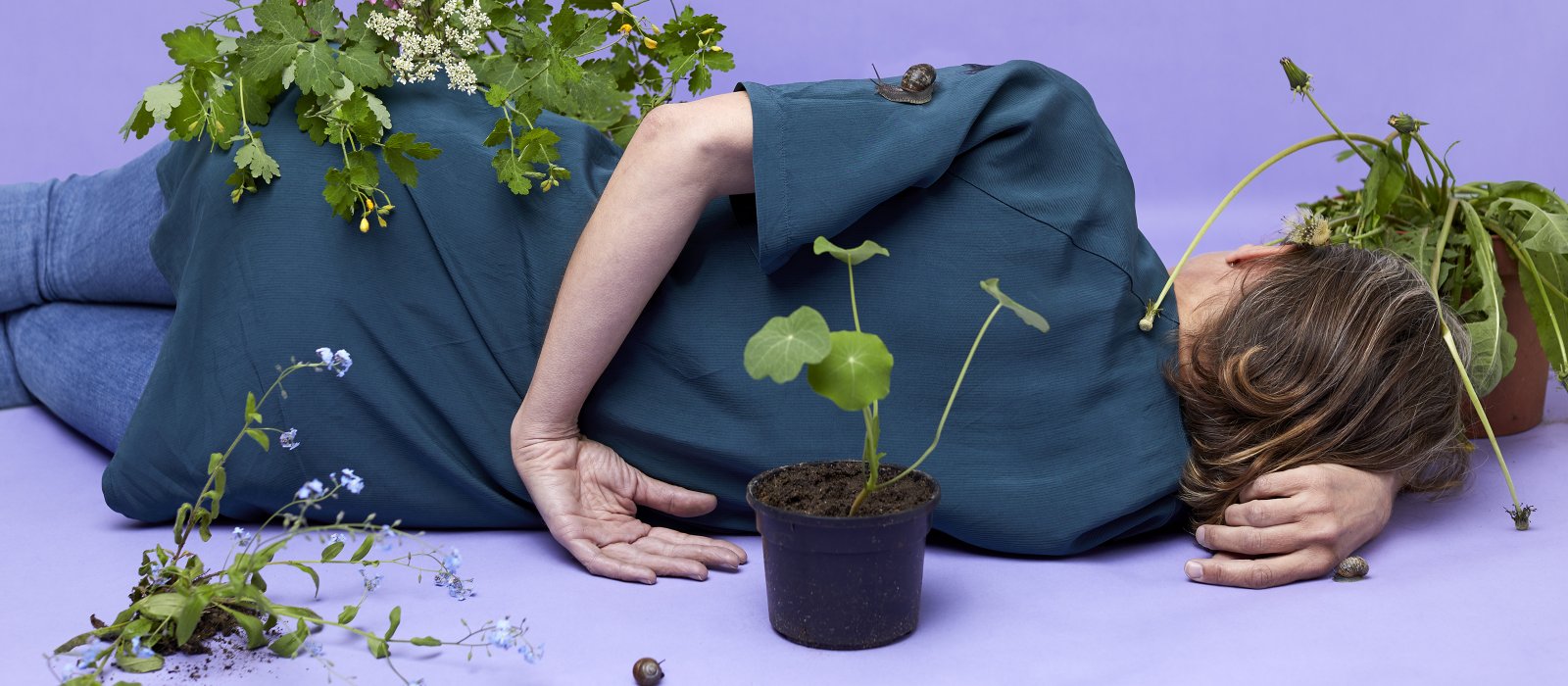
Towards a food system that celebrates biodiversity
While advances in biological research can expand the potential to produce nutritious and healthy food for growing populations, social and economic factors will determine the uptake and value of this research. “There lies the grand challenge,” says Marko Hekkert, Chair of Future Food Utrecht. “The transition to new, sustainable food systems not only entails new technologies, but also changes in markets, user practices, policy and cultural discourses, and governing institutions,” writes Marko Hekkert in ‘The Dynamics of Sustainable Innovation Journeys’. To start thinking of redesigning the food system therefore requires a holistic and “systemic” approach.
Contrary to perception, the global food system works, albeit for a very few winners. “It’s a perfectly organized system, with incredible power games and deeply rooted institutional structures that keep everything in place,” says Marko. He studies the dynamics of change and the complex mechanics of social transformations, from decarbonising the economy to transitioning to sustainable agriculture. “In order to transform the food system radically, we need to understand the socio-technical dynamics.” In plain English, if we understand how actors in the food chain interact and influence each other, we may be able to reorient stimuli towards new, more sustainable practices, from how the ecological balance in agricultural landscapes is restored to what we choose to eat.
Take the dynamics of the Dutch agricultural system. Hens Runhaar, Associate Professor of Governance of Nature and Biodiversity is eager to share his vision – he has just given a presentation to the Dutch Ministry of Agriculture, Nature and Food Quality on ways to promote nature-inclusive agriculture. This is a model that makes better use of ecological processes for food production, but also tries to minimise its impact on the environment by cutting down the use of pesticides, reducing the leaching of nutrients that is creating dead zones in the ocean or supplying the agricultural produce locally.
Governing towards nature-inclusive agriculture requires that not only farmers, but also companies, agri-food chains, banks, governments, NGOs and consumers are stimulated to contribute to a transformation of agricultural practices.
His point of departure is scrutinising the vices of the current system. “Decades of agricultural policies have incentivised farmers to increase their production and efficiency. Farmers have invested a lot of money in order to buy land to satisfy these societal demands, but they operate in a market where prices are given. So shifting away from a capital-intensive and resource-intensive form of farming, which is export-oriented, requires new incentives that reward farmers who minimize their ecological impacts or switch to biological pest control,” explains Runhaar. He is working with a team in Utrecht to demonstrate that positive incentives to invest in ecosystem services can transform the future of dairy farming. "About 30% of the land surface in The Netherlands consists of grasslands, which are used exclusively to produce as much milk as possible. But grasslands can be cultivated to also provide services that preserve soils and renew fertility, protect biodiversity, store carbon, recycle water and nutrients, or decompose waste."
A promising business case for maintaining and restoring biodiversity in agricultural landscapes is in. Merel Soons investigates how we can use agricultural biodiversity to promote productivity of grasslands. “My research has shown that we need nature-conservation areas to protect our most valuable and vulnerable nature areas. These nature-conservation areas should be safe from nutrient emissions and pollution. But nature should also return in the landscape in between nature reserves, such as in the food system. There, it can preserve remaining populations of species that are typical for agricultural landscapes. And these species can help each other and us buffer against climate change. For example, grasslands with a higher number of plant species are likely to withstand drought and flooding better and provide a more stable feed supply – a process that we are currently investigating.” These investigations are done in the Biodiversity and Climate Variability Experiment of Utrecht University (UU BioCliVE), an immense experiment consisting of 352 miniature grasslands where Soons and other Ecology & Biodiversity group members study grassland functioning and services under future climate conditions.
Economic historian Jan Luiten van Zanden reflects: “Raising animals and plants in a way that benefits the soil, the farm workers, and the flora and fauna of that place requires positive incentives by government, but also money. At the moment, agricultural produce is simply too cheap. So we’ll have to pay more for our food. Are consumers happy with that? That’s the big political issue,” he argues.
At the moment, agricultural produce is simply too cheap. We’ll have to pay more for our food.
So, are we ready to pay more for our food? Are we ready to change our dietary habits and put the planet back in balance?
Some anecdotal evidence suggests that people are – and increasingly so. Some studies indicate that consumers are willing to pay more for organic food – with up to 100 % above standard prices. “The double-digit growth rate seen in the markets for meat substitutes and dairy substitutes suggests there is a consumer will towards alternative proteins too,” says Marko Hekkert. Young generations are also growing more conscious of sustainability challenges, more food-savvy, growing ever more aware of their roles in making every food choice matter by ‘voting with the fork’ three times a day. In the United States, the number of farmers’ markets has more than tripled to nearly 8,400 since 2000. And as local food movements spring up, more and more people are shopping local fresh produce.
Even though farmer markets, community-supported agriculture or solidarity food networks are trying to challenge the industrialised model of food production, they are not mainstream, notes Agni Kalfagianni, Associate Professor of Transnational Sustainability Governance at the Copernicus Institute of Sustainable Development, Utrecht. And yet, “these examples of localization and shorter supply chains are putting a face to a movement that can co-exist parallel with our globalized food system, and by doing so, radically change how we understand our relationship with each other and the world around us.”
The more we look for innovative disruptions that can overhaul the modern food system, the clearer it becomes that broader, systemic changes are necessary. We often turn pale before such a grand or tedious struggle, but then something reminds you that small interventions can really help tip the balance. Social and Health Psychologist Dr. Marleen Gillebaart tests the effectiveness of ‘nudging’ techniques to induce healthier food choices: “Imagine you go to do groceries after work. You have the intention of leading a healthy lifestyle, but at that moment you’re out of energy, you’re hungry, and bombarded with dozens of choices. A very simple ‘nudge’ is to make healthier options at the grocery store or supermarket more salient.” At the Self-Regulation lab in Utrecht, Marleen and colleagues have tested this subtle persuasion with a virtual set-up that simulates shopping at a supermarket. “We can see that when healthier products are at eye level or visually prominent, consumers are much more likely to choose for the healthier alternative.”
Healthier and more sustainable food choices send a moral message to the food chain that can influence our food environment and policies.
As such, consumers' food choices can have important impacts on the food system through their market demand, sometimes influencing which foods will be produced and by what means. As the conversation with Agni comes to an end, she utters something incredibly simple, but no less transcendental: “People must have time to cook their food.” Just as we had almost forgotten that eating is an agricultural act, Agni Kalfagianni reminds us that cooking is a political act, one where we can exercise resistance to the industrialised model of food production that has left planetary health out of the food equation.
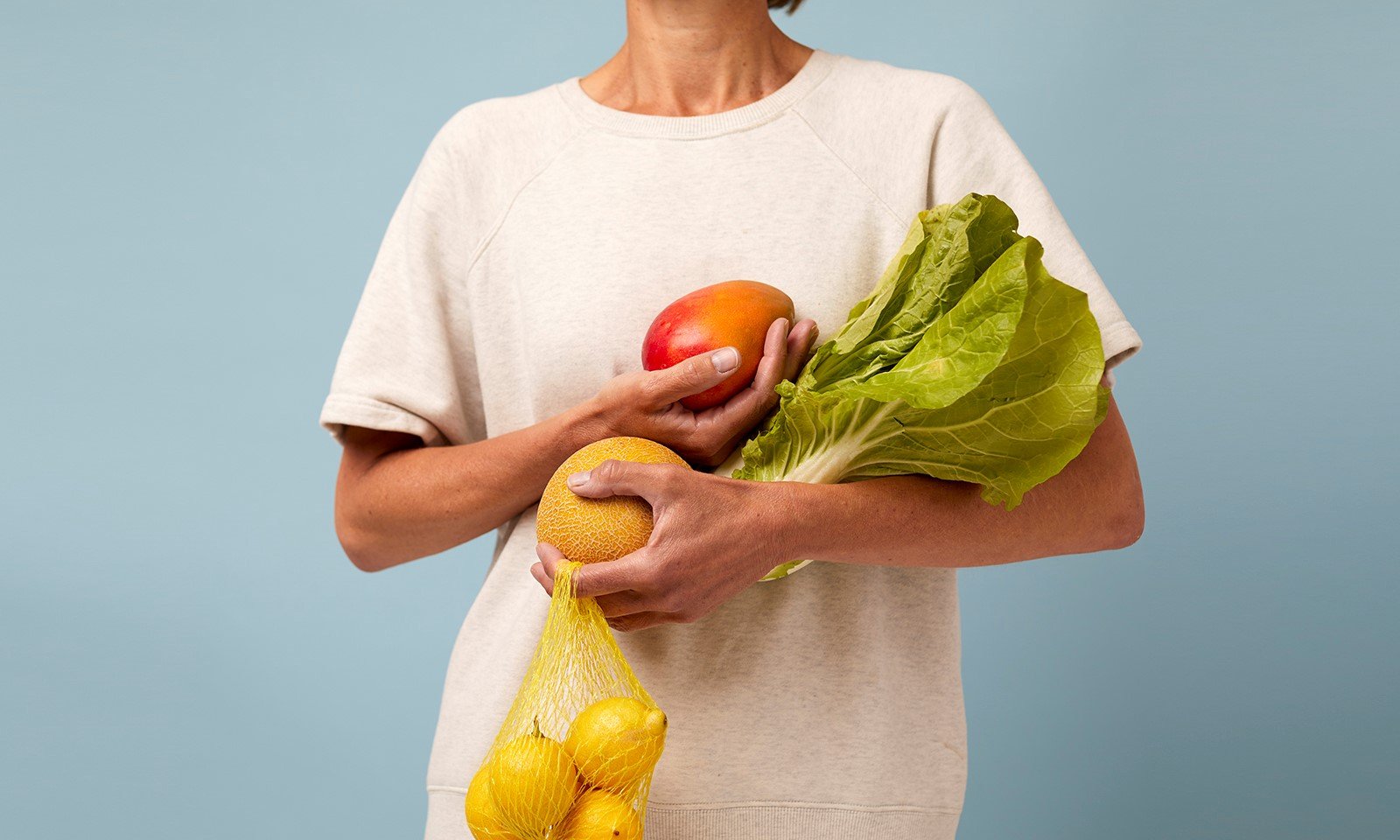
Diversifying and decentralising food systems by localising production can transform our agri-food system.
Future Food Utrecht
Only by daring to look ahead can we gain new perspectives and ideas for the redesign of a food system that is no longer suited for the dual challenge of feeding the world while respecting planetary boundaries and the health of the planet upon which we all depend for our food. By deploying their extraordinary insights into the biology and ecology of plants, scientists at Utrecht University are charting the possibilities of new technologies to make our food more nature-inclusive, healthy and sustainable. By exploring how consumers relate to their food and to the growing alternatives for more sustainable diets, social and innovation scientists are drawing closer to the realisation and acceleration of this behavioural transition that can send ripple signals to the market and the means of production.

What I love about Future Food Utrecht is that it brings together people from all the disciplines that are needed to come up with completely new, more sustainable food systems.
Future Food Utrecht offers a platform for scientists and external stakeholders on which they contribute to the transition of the food chain for a sustainable world. The search is for catalysts of change; small interventions with big effects. They are experimenting with solutions in their own backyards, walking the walk as they go along. For example, Future Food Utrecht joined forces with the catering provider to set up an experimental restaurant that allows for the testing of many of these ideas in practice. Or the signing of the Green Deal for Nature-Inclusive Agriculture in Green Education, with which Utrecht University is educating the new generation of food professionals in radically different ways.
Share
Meet the experts
More stories from Utrecht University
News about healthy and sustainable food
RSSThere are currently no news items pertaining to this department or theme.

